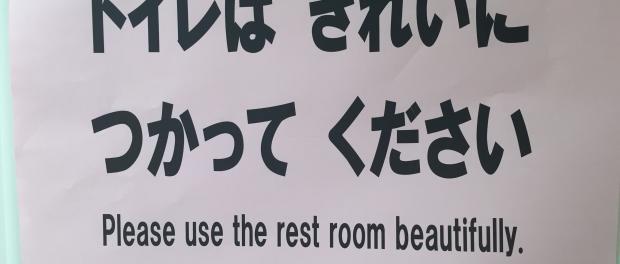Life in Japan: Where clean is beautiful, but 5S is still hard
This past weekend I took the Japanese Language Proficiency Test (Level 5) and saw this sign posted in the bathroom that made me laugh. It was a good stress reliever in advance of the test and got me thinking about writing a blog post about the notion of cleanliness that is inherent in everyday life in Japan. And yes, … Continue reading Life in Japan: Where clean is beautiful, but 5S is still hard
14 Comments
